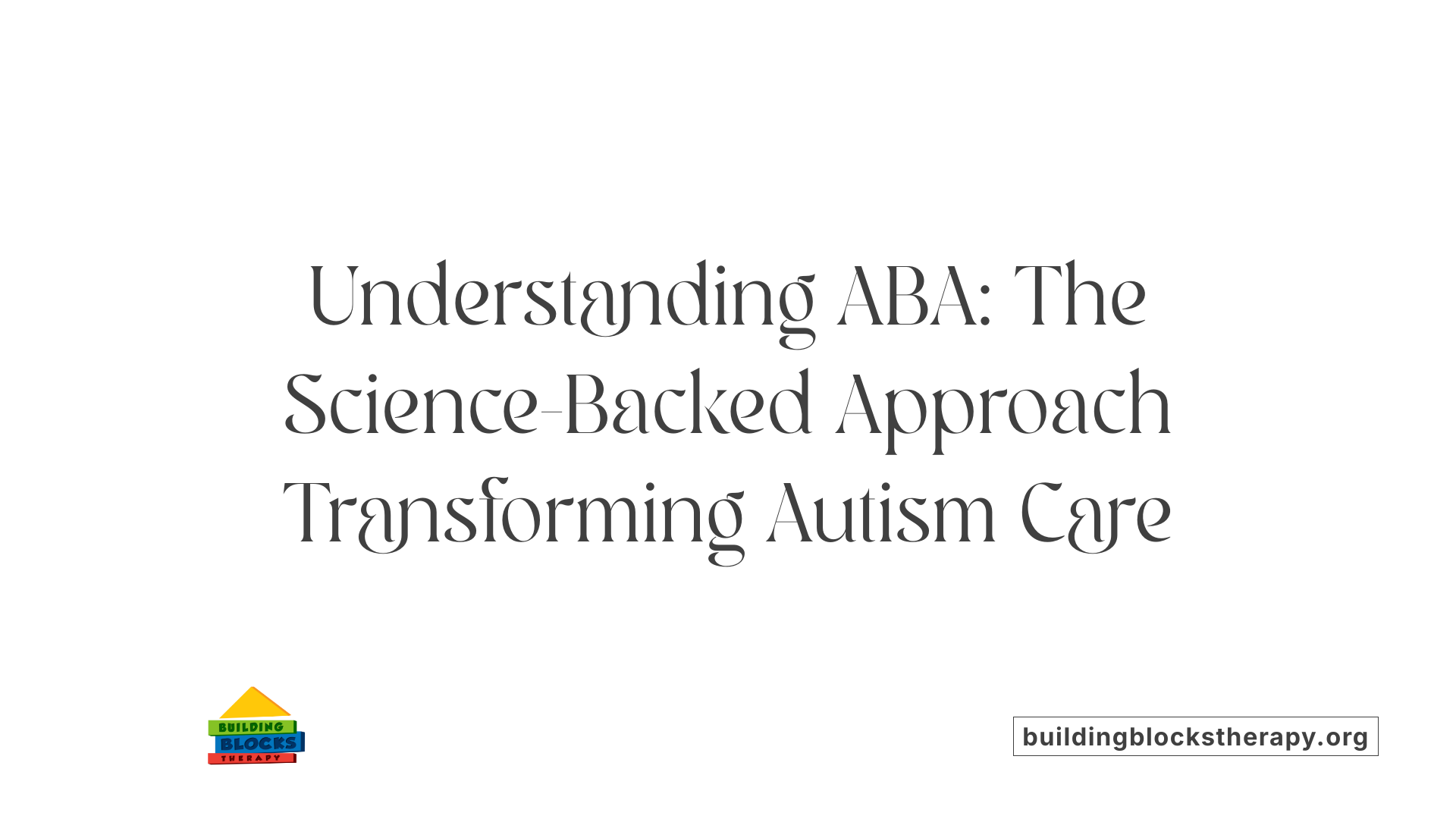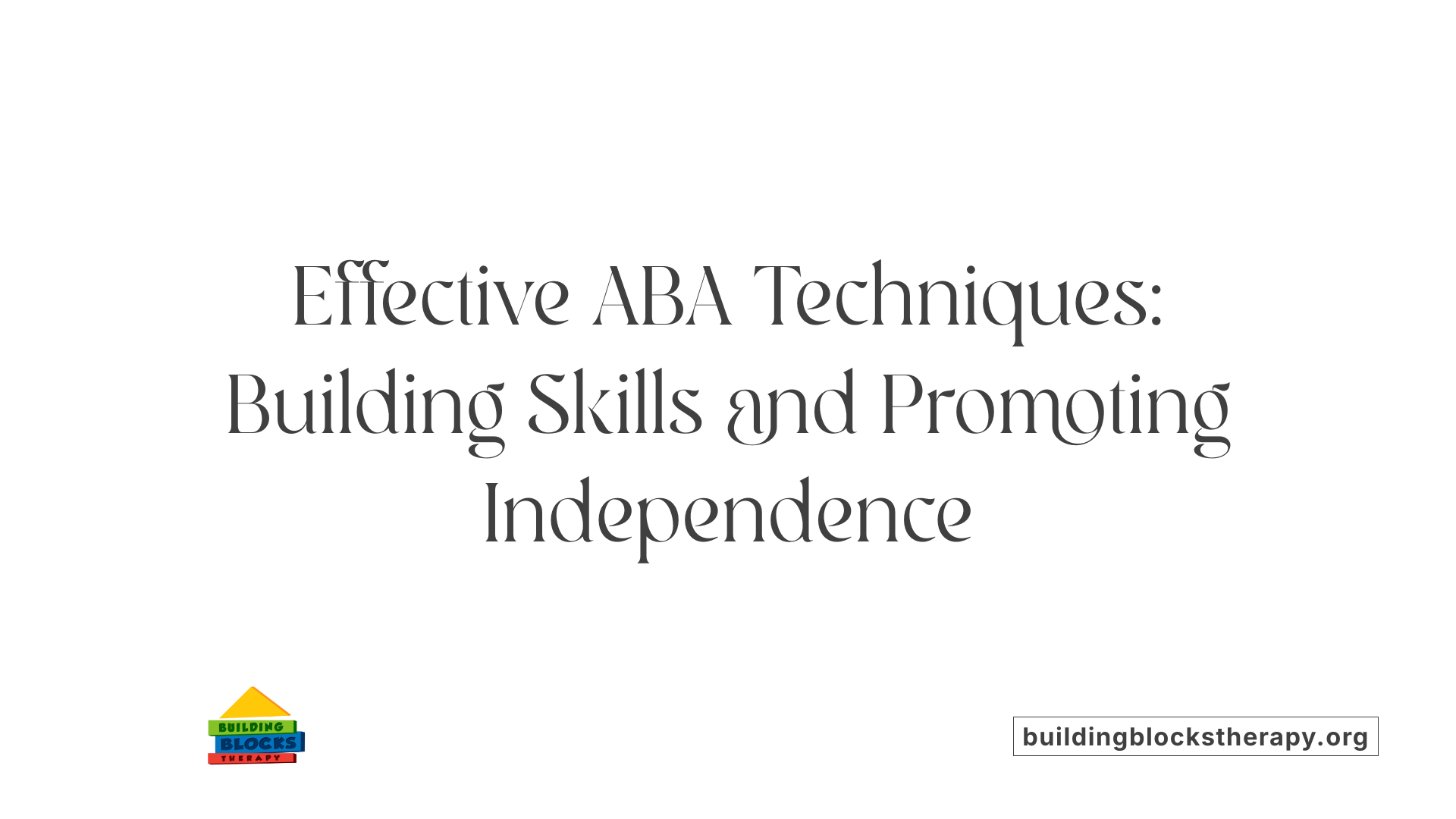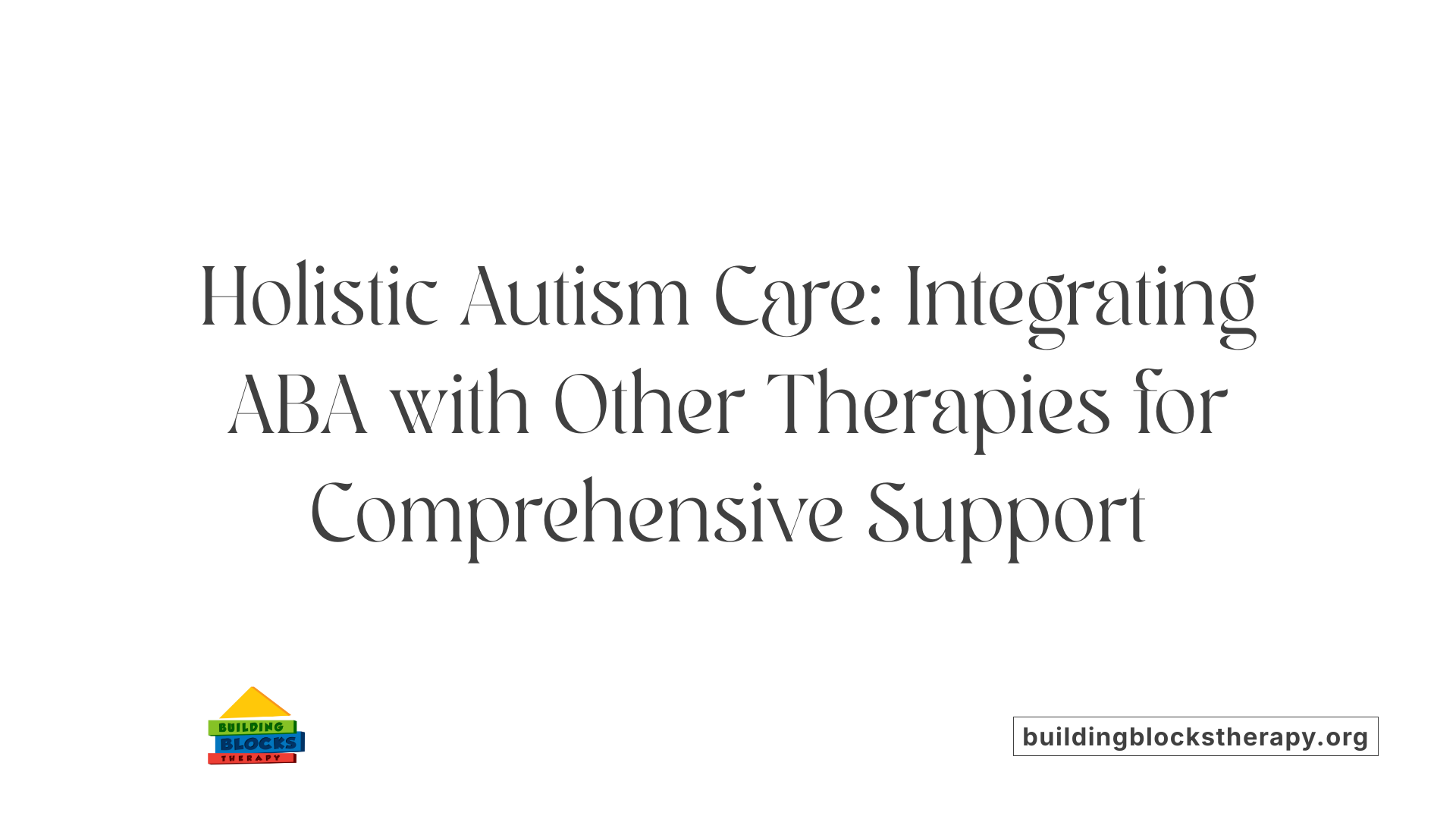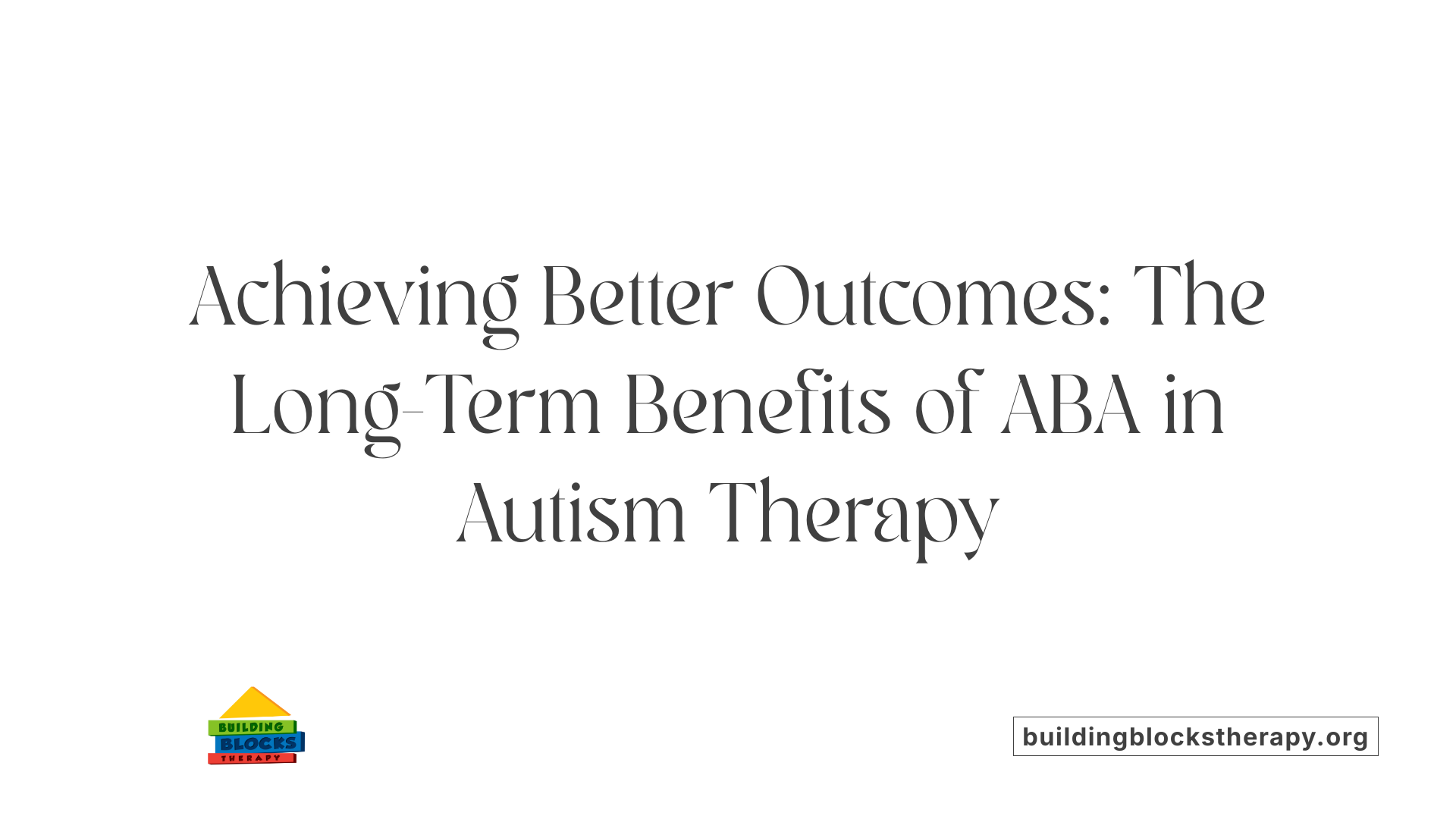Understanding the Foundations of Holistic Autism Therapy
Developing an effective and holistic therapy plan for children with autism requires a nuanced understanding of both the disorder and the diverse range of interventions available. Among these, Applied Behavior Analysis (ABA) therapy stands out as a scientifically-supported, customizable approach that emphasizes skill development across cognitive, communication, social, and self-care domains. This article explores how ABA therapy can be integrated into a broader, multidisciplinary strategy to meet the unique needs of children with autism, ensuring support that promotes their independence and wellbeing across settings.
Behavioral Analysis Therapy: Core Principles and Its Role in Autism Treatment

What is behavioral analysis therapy and how is it used in treating autism?
Behavioral analysis therapy, or Applied Behavior Analysis (ABA), is a science-backed approach based on learning and behavior principles. It aims to improve adaptive and socially meaningful behaviors while reducing challenging behaviors in individuals with autism spectrum disorder (ASD). ABA relies on analyzing the antecedents (triggers), behaviors themselves, and consequences, effectively shaping behavior through systematic application of behavioral strategies.
How does ABA work to support individuals with autism?
ABA uses techniques such as positive reinforcement—where desirable behaviors are followed by rewards or praise to increase their frequency—and negative reinforcement, which involves removing an unpleasant stimulus to encourage behavior repetition. This therapy teaches vital skills like communication, emotional regulation, social interaction, daily living tasks, and academic readiness.
What techniques are involved in ABA?
Several techniques form the foundation of ABA therapy:
- Positive reinforcement: Rewarding good behavior to encourage its recurrence.
- Negative reinforcement: Removing an aversive condition to strengthen behavior.
- Generalization: Helping individuals apply learned skills across different environments such as home, school, and community.
- Discrete Trial Training (DTT): Breaking skills into small trials with prompts and rewards.
- Task Analysis: Decomposing complex tasks into smaller steps.
- Natural Environment Training (NET): Teaching skills within the child’s everyday surroundings.
- Parent-implemented interventions: Educating caregivers to continue therapy techniques at home.
How is ABA therapy personalized?
ABA programs are highly individualized. Treatment plans are designed and monitored by certified professionals tailored to the unique needs, strengths, and goals of each person. This personalization ensures progress in various developmental areas including functional communication, social skills, self-help, and emotional regulation. Ongoing data collection and analysis allow therapists to adjust methods dynamically.
In what settings is ABA therapy conducted and what is its scope?
ABA therapy is flexible and provided in multiple settings such as homes, clinics, schools, and community environments. It is suitable for all age groups—from early learners to adults. ABA addresses a wide range of behaviors like speech and communication, safety awareness, play, social skills, and motor abilities. Collaboration with other specialists such as speech and occupational therapists ensures comprehensive care.
By focusing on evidence-based, individualized interventions, ABA has become a cornerstone in autism treatment. It helps individuals build independence, enhance social participation, and lead meaningful lives.
Professional Providers and Collaboration in ABA Therapy

Who typically provides behavioral analysis therapy for individuals with autism?
Behavioral analysis therapy for individuals with autism is usually delivered by trained professionals specializing in Applied Behavior Analysis (ABA). Primary providers include Board Certified Behavior Analysts (BCBAs), who are responsible for assessing individuals, designing customized treatment plans, and supervising therapy sessions. Registered Behavior Technicians (RBTs) play a crucial role by implementing these treatment strategies directly with clients, operating under the supervision of BCBAs.
Many ABA providers operate within organizations that offer a range of autism support services. These organizations employ staff skilled in evidence-based ABA interventions such as Discrete Trial Training (DTT), Pivotal Response Training (PRT), and the Early Start Denver Model (ESDM). Professionals may come from diverse backgrounds including psychology, education, and speech therapy, and obtain specialized certification in ABA methodologies to enhance treatment quality.
How do interdisciplinary professionals contribute to ABA therapy?
ABA therapy often involves collaboration among various specialists to provide comprehensive care. Speech therapists assist with communication development, occupational therapists help improve sensory processing and daily living skills, and physical therapists address motor skills and physical health. This team approach ensures that interventions address all aspects of an individual's developmental needs.
What is the role of families in ABA therapy?
Family involvement is a cornerstone of effective ABA therapy. Parent-implemented intervention trains caregivers to apply ABA strategies at home, fostering consistency and promoting generalization of skills. Families receive ongoing support and coaching to manage challenging behaviors and reinforce positive outcomes, enhancing therapeutic success beyond clinical settings.
Why are individualized assessment and ongoing monitoring important?
Each ABA program is tailored through comprehensive evaluations conducted by BCBAs, ensuring treatments meet the unique needs of each individual. Data collection and analysis during therapy sessions allow for continuous monitoring of progress. Adjustments to interventions are made based on this data to maximize effectiveness, delivering a personalized, responsive treatment experience.
Together, these professional roles and collaborative practices form a robust support network to enhance the lives of individuals with autism spectrum disorder through ABA therapy.
ABA Therapy Techniques and Models for Holistic Skill Development

What are the main ABA techniques used in therapy?
ABA therapy incorporates several effective techniques to encourage desired behaviors and skill acquisition. Positive reinforcement involves rewarding or praising desired behaviors to increase their frequency. Conversely, negative reinforcement entails removing an unpleasant stimulus when the desired behavior occurs, encouraging its repetition. Discrete Trial Training (DTT) is a structured method using repeated trials with prompts and rewards to teach specific skills, particularly in language and social interaction. Task analysis breaks down complex tasks into manageable steps to aid in teaching daily living skills, especially for individuals with executive functioning challenges.
How does Natural Environment Training (NET) benefit skill development?
NET emphasizes teaching skills within the child's natural surroundings, such as home or community settings. This approach fosters real-life applicability and helps generalize skills beyond the therapy environment, allowing individuals to use these skills effectively across various contexts.
What role does Pivotal Response Training (PRT) play in ABA?
PRT targets pivotal areas of development, like motivation and social engagement. By focusing on these foundational behavioral areas, PRT promotes widespread improvements, encouraging more natural interactions and enhanced learning across other behaviors.
How does Relationship Development Intervention (RDI) support families?
RDI is a family-centered approach concentrating on improving social and emotional skills to build meaningful relationships. It actively involves caregivers in the therapy process, enhancing emotional connections and communication within the family.
What are some effective ABA models used for autism?
Several validated ABA models offer comprehensive interventions for autism. Early Intensive Behavioral Intervention (EIBI) provides intensive early therapy, focusing on broad skill development. The Early Start Denver Model (ESDM) integrates ABA principles with developmental and relationship-based approaches, delivering effective early childhood intervention. These models emphasize individualized treatment, ensuring therapy meets each person's unique needs.
Integrating ABA Into a Holistic Autism Therapy Plan

Customizing Treatment Plans Based on Comprehensive Evaluations
ABA therapy begins with thorough assessments conducted by a Board Certified Behavior Analyst (BCBA). These evaluations help create personalized treatment plans tailored to individual needs, addressing areas such as communication, social skills, and behavior. This individualized approach ensures that therapy targets the unique strengths and challenges of each person, moving beyond a one-size-fits-all method.
Collaboration Among Specialists for Speech, Occupational, and Physical Therapies
A holistic autism therapy plan involves close collaboration among various specialists. Speech therapists, occupational therapists, and physical therapists often work alongside ABA providers. This integrated approach facilitates comprehensive care, enabling the treatment of multiple developmental areas simultaneously and fostering more consistent progress across disciplines.
Incorporating Family and Caregiver Training
Training parents and caregivers to implement ABA techniques at home is a cornerstone of effective therapy. Parent-implemented interventions help maintain consistency, promote skill generalization, and support managing challenging behaviors outside clinical settings. Involving families ensures therapy strategies align with daily routines and cultural contexts.
Applying ABA Across Settings: Home, School, and Community
To maximize effectiveness, ABA therapy emphasizes generalization—helping individuals apply learned skills in various environments such as home, school, and community. Techniques like Natural Environment Training (NET) support learning in real-life contexts, making skills more functional and meaningful.
Importance of Data Analysis and Ongoing Progress Monitoring
Continuous data collection and analysis guide the ongoing refinement of treatment plans. Monitoring progress allows therapists to adjust strategies in response to individual growth or challenges, ensuring that interventions remain effective and goals are met.
Benefits and Long-Term Outcomes of ABA Therapy Within Holistic Care

What are the main benefits of behavioral analysis therapy for autism?
Applied Behavior Analysis (ABA) therapy has been extensively researched and shown to deliver substantial benefits for children with autism. These benefits include notable improvements in cognition, language, social skills, and adaptive behaviors. By using individualized, data-driven plans, ABA helps children develop communication and social interaction skills critical for their daily lives.
How does ABA enhance daily living and self-help skills?
ABA employs techniques like task analysis to break down complex daily activities into manageable steps. This approach supports children, especially those with executive functioning challenges, in mastering self-help skills such as dressing, hygiene, and meal preparation. Enhancing these skills promotes greater independence and confidence.
In what ways does ABA reduce challenging behaviors and improve emotional regulation?
Through the use of positive and negative reinforcement strategies, ABA encourages desired behaviors while diminishing challenging behaviors. Furthermore, ABA targets emotional regulation by teaching individuals coping skills and social engagement, which helps them respond appropriately to various social and environmental situations.
How does ABA promote independence and community participation?
Long-term ABA therapy fosters intellectual, language, and daily living skills, which enable children to navigate home, school, and community environments more effectively. Techniques such as Generalization and Natural Environment Training ensure that learned skills transfer across different settings, facilitating meaningful participation in society.
What role does ABA therapy play in improving quality of life for children with autism?
ABA therapy’s holistic, individualized approach, often delivered in collaboration with other specialists, supports not only skill development but also emotional and social growth. These comprehensive improvements enhance the overall quality of life by empowering children to lead fulfilling lives with increased autonomy and social inclusion.
| Benefit Area | Description | Impact on Child |
|---|---|---|
| Cognitive and Language | Development through structured skill teaching and reinforcement | Improved communication and problem-solving abilities |
| Daily Living Skills | Enhanced by task analysis and step-by-step teaching | Greater independence in self-care and household tasks |
| Behavioral Regulation | Reduction of challenging behaviors through reinforcement and motivational strategies | Better emotional control and decreased disruptive behaviors |
| Social Skills and Engagement | Promoted by interventions focusing on social motivation and natural environment training | Increased social interaction and community participation |
| Quality of Life | Overall improvements through individualized therapy and family involvement | Enhanced well-being, autonomy, and inclusion |
A Path Forward for Holistic Autism Therapy
Holistic therapy plans that center on evidence-based approaches like ABA empower children with autism to reach their full potential. By integrating behaviorally driven interventions with family involvement and multidisciplinary collaboration, these strategies foster meaningful growth across communication, social, and daily living domains. Customized ABA programs, combined with ongoing assessment and tailored support, ensure that therapies evolve with each child's unique needs. Ultimately, a well-rounded, comprehensive approach not only enhances skill acquisition but also builds the foundation for lifelong independence and improved quality of life.
References
- Effective ABA Therapy Techniques for Autism
- ABA Therapist Near Me in Long Island City, NY, and New ...
- ABA Therapy Near Me | Autism Therapists & Speech Therapy ...
- Play-Based ABA Therapy for Autism
- BCOTB - ABA Therapy in Tampa Bay
- Best Applied Behavioral Analysis Services in Florida
- Applied Behavior Analysis (ABA)
- The Top 10 Reasons Children With Autism Deserve ABA
- Applied Behavior Analysis (ABA)
- 6 Benefits of ABA Therapy for Children with Autism






